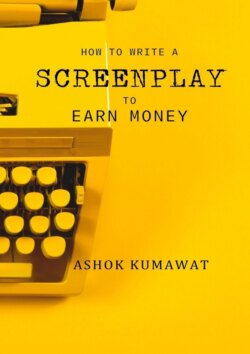Читать книгу How to Write a Screenplay to Earn Money - Ashok Kumawat - Страница 4
На сайте Литреса книга снята с продажи.
Chapter 2: Crafting a Compelling Story Idea
ОглавлениеGreat screenplays start with great story ideas. Whether you’re a seasoned screenwriter or a novice looking to break into the industry, the process of generating a compelling story idea is the critical first step in your journey to writing a screenplay that has the potential to earn money and captivate audiences. In this chapter, we will explore the art and techniques of crafting a story idea that not only excites you but also has the potential to resonate with a wide audience.
The Power of a Unique Concept
Every successful screenplay begins with a unique concept. A compelling story idea often stems from a «what if» scenario or a thought-provoking question. It’s that kernel of an idea that sets your story apart from the rest. For example, think of the concept behind «Inception»: What if we could enter people’s dreams and manipulate their thoughts? This unique concept forms the foundation of a mind-bending story.
To generate your unique concept, you can draw inspiration from various sources – books, news articles, personal experiences, or even your own daydreams. Try to think outside the box and challenge conventional thinking. What unusual or unexpected twist can you bring to a familiar genre or theme?
Understanding Genre and Audience
Before diving headlong into your story idea, it’s essential to consider the genre and target audience for your screenplay. Different genres have distinct conventions and expectations. For example, a romantic comedy will have different elements and themes than a psychological thriller. Identifying your genre early on will help you shape your story idea to fit within those parameters.
Additionally, understanding your target audience is crucial. Who are you writing for? What age group, interests, and preferences do they have? A family-friendly animated film will cater to a different audience than a gritty, R-rated crime drama. Tailoring your story idea to your intended audience ensures that it resonates with the right viewers.
Character-Driven or Plot-Driven?
In the world of screenwriting, there are character-driven stories and plot-driven stories. Character-driven stories focus primarily on the development and transformation of the characters. These scripts often explore the inner workings of the protagonists’ minds, their flaws, and their growth throughout the narrative. A classic example of a character-driven film is «The Shawshank Redemption.»
On the other hand, plot-driven stories emphasize the external events and actions that drive the story forward. These scripts tend to be fast-paced and full of twists and turns, with characters often serving as vehicles to advance the plot. Think of action-packed blockbusters like «Die Hard» or «Mission: Impossible.»
Your story idea should align with your chosen approach – character-driven or plot-driven. This decision will significantly impact how you develop your screenplay and engage your audience.
The Emotional Core of Your Story
Great screenplays resonate with audiences on an emotional level. Your story idea should have an emotional core – a central theme or message that evokes powerful feelings in the audience. Whether it’s love, loss, redemption, or the triumph of the human spirit, the emotional core is what connects viewers to your story.
Consider «E.T. the Extra-Terrestrial.» At its heart, it’s a story about friendship, belonging, and the bond between a boy and an alien. These emotional themes elevate the film beyond its science fiction elements, making it a beloved classic.
To identify the emotional core of your story idea, ask yourself: What universal human experience or emotion does my concept explore? How can I weave this theme into the fabric of my screenplay to create a meaningful and relatable narrative?
Conflict and Stakes
Every engaging story needs conflict and stakes. Conflict provides the tension and drama that drive the narrative forward, while stakes give the audience a reason to invest in the outcome. Whether it’s a high-stakes heist in «Ocean’s Eleven» or a personal journey of self-discovery in «Eat Pray Love,» conflict and stakes are essential components of storytelling.
When crafting your story idea, consider the primary conflict your characters will face. Who or what is the antagonist or obstacle they must overcome? What are the consequences if they fail? The greater the stakes, the more compelling the story becomes.
Research and Inspiration
Research is a valuable tool in the early stages of crafting a story idea. It can help you gather information, explore new perspectives, and uncover unique details that can enhance your screenplay. For example, if you’re writing a historical drama, in-depth research can provide you with the historical context and authenticity necessary to transport the audience to a different era.
Additionally, seek inspiration from various sources. Watch films, read books, and observe the world around you. Inspiration can strike at unexpected moments, so keep a notebook or digital device handy to jot down ideas and observations as they come.
Testing Your Idea
Once you’ve developed your story idea, it’s essential to test its viability. Share your concept with trusted friends, writing peers, or industry professionals to get feedback. Does your idea resonate with others? Do they find it intriguing or engaging? Constructive feedback can help you refine and strengthen your concept before you invest time and effort in developing a full screenplay.
Conclusion
Crafting a compelling story idea is the first crucial step on your journey to writing a screenplay that has the potential to earn money and captivate audiences. Your story idea is the foundation upon which your entire screenplay will be built, so take the time to explore unique concepts, understand your genre and audience, and identify the emotional core of your narrative.
